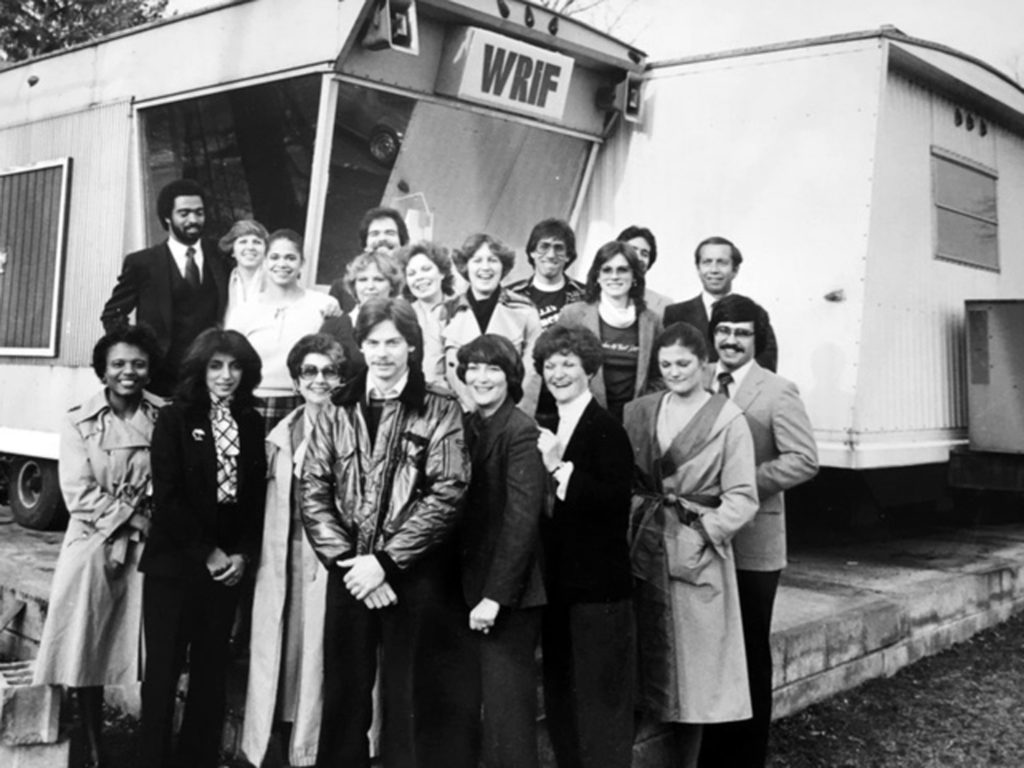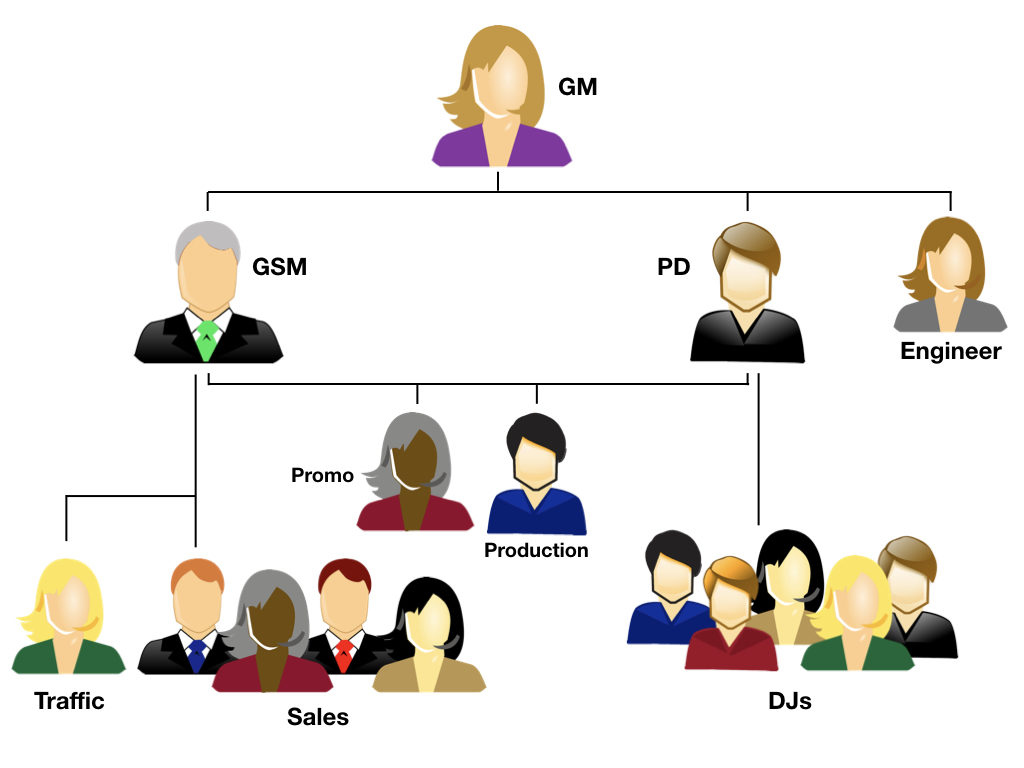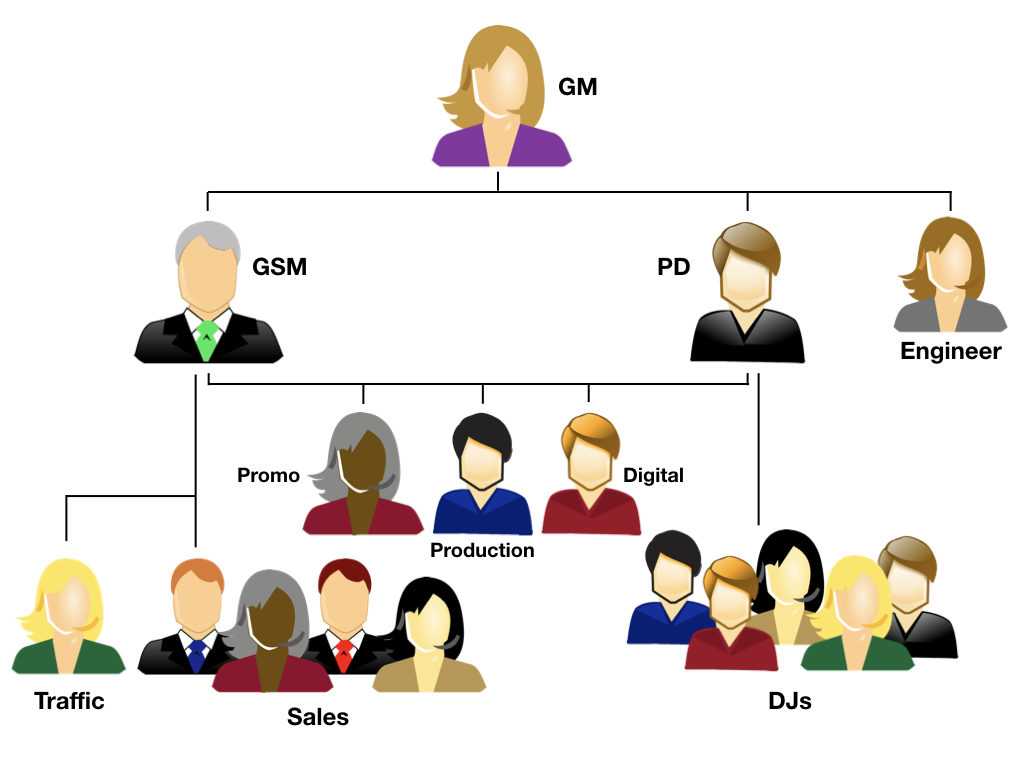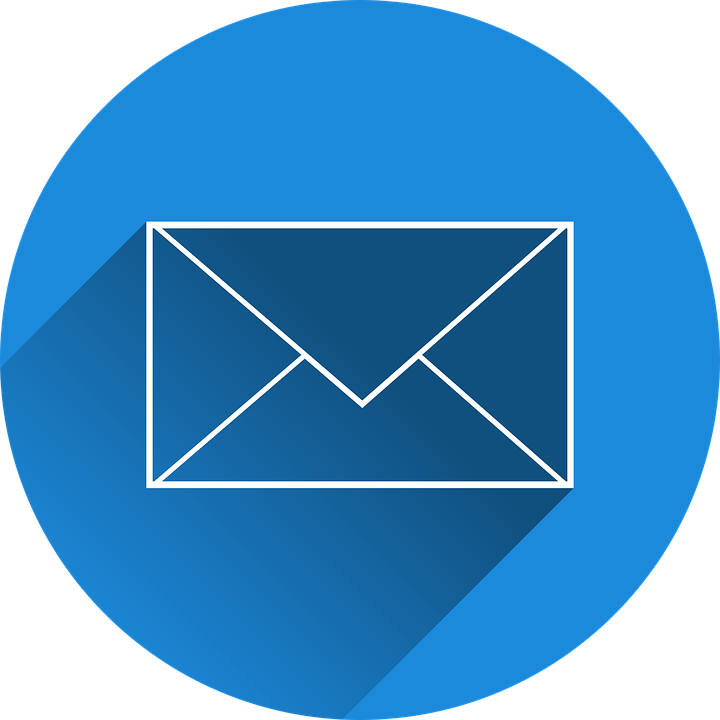
Earlier this week, one of our blog posts clearly resonated – “Are You Chasing A Radio Mirage?” I saw it in the page views, the comments, on social media.
But those are the analytics. I actually felt the emotions from many many current and former radio broadcasters. Understandably, they are involved in this conversation in a visceral, emotional way. When you invest your career in an industry sector and it starts to change, the disruption is palpable.
The radio industry isn’t the same as it used to be. That’s not a value judgment – it’s a statement of fact. The photo above is 40 years old, taken outside the WRIF trailers. (No, I somehow missed this photo op, probably in my office throwing up over the ratings.) It seems even older than that to me, when I think about the radio business that used to be. Radio’s changed since then …in a big way. But has it?
Monday’s post pointed out that while layoffs have been a big story in the radio business these past several years, there’s been less coverage devoted to some of the new positions created in order to help companies transition to a digital reality.
The post stimulated radio vet Seth Resler to re-examine the ways in which many stations are internally structured and the new job descriptions that can  help broadcasters turn the corner. Seth is a case in point, as is Jacobs Media. We created his unique job title – Digital Dot Connector – in 2015 when we sensed radio broadcasters needed to better strategize about how to integrate the various digital tools into their arsenals.
help broadcasters turn the corner. Seth is a case in point, as is Jacobs Media. We created his unique job title – Digital Dot Connector – in 2015 when we sensed radio broadcasters needed to better strategize about how to integrate the various digital tools into their arsenals.
In today’s guest post, Seth pulls out his crystal ball and predicts the organization chart future inside radio operations. It’s a way to re-imagine station structure and new ways of conducting business. I hope it provides you with more food for thought about your career, your station, or your company. – FJ
I first walked into a radio station 23 years ago. When I did, the station’s organizational chart looked something like this:

The world has changed a lot since then. The internet rose, the Twin Towers fell; we entered two wars, and experienced the Great Recession; we started searching Google, liking Facebook, and tweeting on Twitter; we began ordering everything from books to food to laundry detergent online; we bought iPhones and Echoes so we could listen to Pandora and podcasts; we cut our cords and ditched our landlines; our musical tastes evolved from Lilith Fair to electronica to rap-rock to garage to Dirty South to EDM to mumble rap.
Boston reversed the Curse; the Avengers assembled and Voldemort was vanquished; boy bands came back into style then went out and came back in again; we elected our first African-American president, followed by our first reality TV star; Tiger, the Cos, and Lance were heroes until they weren’t; we adopted the PPM to measure our TSL; and we saw the rise of geeky titans named Jobs and Zuckerberg and Musk.
And after all that change in the world, our radio station organizational chart now looks like this:

Despite all the change in the way the world works, radio stations haven’t really changed the way they work. For the most part, we have the same staff positions with a few extra duties tacked on. If radio wants to stay competitive, it’s going to need to hire some new people to perform some new tricks.
To successfully deal with this new world, here are five positions that your radio station may not have, but should:
1. Content Director
It’s not enough for radio stations to deliver just a single on-air stream. Even if audio is your station’s primary focus, every media company must be a multi-media company to stay competitive today. CNN publishes podcasts, The New York Times produces videos, and NPR posts articles.
Likewise, your station needs to be creating online content to engage the audience using multiple formats, including text, video, and photographs. To do this, you’ll need a Content Director who answers to your Program Director or Brand Manager. This person should not only oversee a team whose job it is to produce content, but also find ways to generate additional content by taking advantage of outside sources, like guest bloggers or user-generated material.
On the Team: Bloggers (preferably with a journalism background), a graphic designer, a video producer, and a podcast producer.
Outsource: Search Engine Optimization.
2. Demand Gen Manager
In radio, when we talk about our marketing staffs, we are talking about people who are tasked with attracting new listeners. In every other industry, when companies talk about their marketing staffs, they are talking about people who are tasked with attracting paying customers.
In commercial radio, we don’t do that. Instead, we’ve decided that our salespeople should be generating their own leads. Unfortunately, the ability to close sales and market a service are two completely different skill sets. Just because a person possesses one, it doesn’t follow that they have the other.
Even worse, most of our salespeople are using an outdated lead generation technique called “prospecting.” When prospecting, our salespeople monitor other local media outlets for ads. Then they call on those advertisers, tell them they spent their money in the wrong place, and ask them to redeploy their ad dollars on our station next time. This is like Ronald McDonald standing at the end of the KFC drive-thru and yelling to every exiting car, “Next time, get a Happy Meal!”
The art of lead generation has advanced significantly with the rise of the internet. Radio can do a much better job of generating demand for station services, but to do so, the industry is going to have to look at the lead generation techniques used by companies outside of our industry. Radio should hire Demand Gen Managers responsible for marketing station services to potential clients and delivering qualified leads to salespeople so they can close more deals.
Also on the Team: Content creators who write blog posts, white papers, and webinars (aimed at potential clients, not listeners).

3. UX Manager
Once upon a time, there were only two ways for listeners to interact with your station: on the air and on the street. Your station had a team of people assigned to each of those touch points: a Program Director with DJs, and a Promotions Director with a street team.
Today, there are tons of ways listeners can interact with your radio station: the website, the mobile app, smart speakers, streaming aggregators like TuneIn and iHeart Radio, email, text message, Facebook, Twitter, Instagram, Snapchat, podcasts, through search engines, in dashboards via Apple CarPlay and Android Auto, by way of smart TVs, and so on.
TuneIn and iHeart Radio, email, text message, Facebook, Twitter, Instagram, Snapchat, podcasts, through search engines, in dashboards via Apple CarPlay and Android Auto, by way of smart TVs, and so on.
The UX – or User Experience – has never been more important.
Who on your team is making sure that the listener experience at each of these touch points is a positive one? Who is checking to make sure that the album artwork for each song shows up properly in the car dashboard? Who’s running usability tests on your website to see if it’s easy to purchase tickets for the station’s upcoming concert? Who’s testing Siri and Alexa to see what happens when listeners give different voice commands? Your station needs somebody whose sole role is to rotate through the various touch points, test the user experience, and address any issues that arise.
Outsource: Mobile app development, smart speaker skill development.
4. Director of Branded Podcasts
While podcast listening has steadily grown over the last decade and should continue to do so, many podcasters are still trying to figure out how to monetize their shows. Most of us have taken the traditional radio model — build an audience and then force them to listen to ads — and tried to slap it onto podcasting. The problem is that the radio model is built on scarcity. When there’s only a few dozen radio stations in each market, it’s easy to attract a big enough audience to interest advertisers. But when you’re competing against over 600,000 other podcasts, reaching critical mass is difficult, if not impossible.

The real revenue opportunity for radio in the podcasting space is not in advertising, but in branded podcasts: creating podcasts for local businesses as a way for them to engage with their customers. Sheri Lynch of the syndicated morning show Bob & Sheri hosts a successful branded podcast for an advertiser in the financial services space. Her Money with Sheri Lynch and Kris Carroll is a great example of the podcasting model that leverages a radio station’s expertise.
But to generate a significant revenue stream from branded podcasts, the radio business will need to give somebody ownership of it. Radio stations (or clusters) should hire a Director of Branded Podcasts, and in doing so, they should look for candidates with a solid track record in the podcasting space.
On the Team: A salesperson or two who knows how to sell branded podcasts, and a producer.
5. Database Manager
In the age of Big Data, advertisers have become less interested in reaching the most consumers and more intrigued by reaching the right consumers. If radio broadcasters are going to compete with Google, Facebook, and other internet media outlets, they’re going to need a lot of information about their listeners: age, location, gender, income level, etc.
But it’s not enough to collect this data; it is essential broadcasters know how to use it. Radio broadcasters will want a Database Manager who knows how to collect data, move it from one software program to another when necessary, and pull relevant queries so stations can execute targeted  promotional campaigns with surgical precision for clients.
promotional campaigns with surgical precision for clients.
Also on the Team: With great data comes great responsibility, so hire an IT Security Engineer with one mission: to ensure that listeners’ private data remains safe. This means encrypting the data to protect against hackers and executing a recovery plan should anything go wrong.
The world has changed, and radio listeners have changed with it. For radio stations to survive and thrive in the coming decades, they will need to change, too. That starts by rethinking the staff structure. It’s time to rebuild our organizations for the modern world.
Thanks to Tom & Tawnya Bender for the WRIF photo. And yes, they’re both in the picture (along with Paul – upper right behind Tawnya).
- A Simple Digital Treat to Thank Your Radio Listeners This Thanksgiving - November 13, 2023
- Interview Questions When Hiring Your Radio Station’s Next Digital Marketing Manager - November 6, 2023
- A Radio Conversation with ChatGPT: Part 2 – Promotions - October 30, 2023




Fred and Seth,
Great one-two punch of articles. I’d adjust one spot in the org chart of the Radio Cluster of the FutureNow and place the Content Director over the brand manager as that CD (you know we can’t get away from job title acronyms) would be producing content with a larger scope that what might be seen by a more narrowly focused brand manager.
Thanks for reading, Eric!
Yes, there’s more than one way to skin the cat, here. It’s up to each organization to figure out what works best for them. What works for the big companies may not work for the smaller players. So stations may not have these exact titles or may dole the duties out in a different manner.
My hope is to get radio broadcasters talking about the roles they need to compete in the digital age and to re-examine their staff structure as a whole. For too long, we’ve been tacking on duties in an ad hoc manner. It may be time to blow the org chart up and rethink the structure from the ground up.
Isn’t radio’s almost sole focus on providing adequate products for as little money as possible?
Find ways to do something already being done for less money and there will always be a radio job for you. The further you stray form that, the less job security.
These are great ideas, but after the convention speeches are uploaded to YouTube, refer to the previous paragraph.
Thanks for the comment, Robert. Here’s hoping radio’s era of consolidation is over and we invest in the future.
You also need a SOUND and PROCESSING consultant, because most PDs today are too deaf to set up the sound of their station and also because processing for broadcast and streaming have to be done differently for the optimum result.
Dana,
So true! As a DJ-turned-podcaster, the one thing I really miss is having an audio engineer! You don’t know what you’ve got til it’s gone, and I really appreciate all of the folks who made my stations sound so good over the years. Yes, competent sound processing is a must, and if stations start producing more audio content than just what goes over the air — podcasts, for example — then they may need more staffers to handle this.
As I read this – I came up with maybe a solution. It’s a VISION manager. Each of our media outlets now serve multiple masters-but one focused vision can provide nothing but success if it’s created, agreed upon and maintained. Take the NFL model. Each team has ONE head coach. Behind that coach is a series of coordinators and specialists in their own area. Everyone should contribute, suggest and cultivate. . but after that vision is agreed upon the right person should be totally focused on that vision. That person should monitor every aspect of the organization and point out where the greatness is – and where something might be missing. It’s a real dream situation to have total focus. . but if we remember the 60s and 70s and a guy named Paul Drew (who I’ve just been reminded of) – he was on top of everything that happened in his station. There are still brilliant people in our world who should really be allowed to focus in on the VISION of the organization. I think you’ll agree that many of our companies -and stations lack vision. I’m fortunate to work with a cluster that has vision-has overworked and people with monumental challenges, but we’re slowly making inroads and adding success daily.
Dave, good thoughts all. Some of those viaion people – Paul Drew is a good example – simply were part of companies, often in a programming role, but not necessarily. Julian Breen played that role at Greater Media and later Buzz Knight, John Parikhal did it for multiple broadcasters as James Cridland is doing it today, and in his own way, Nick Michaels synthesized the media world around him. That’s really been what Jerry Lee has been about for half a century. I think in the modern era, folks like Guy Zapoleon performed that function for iHeart. It’s a great gig, but a very challenging task.
That’s one reason why Paul and I are so bullish on CES as a start-of-the-year reset. You don’t just see the techcnology and innovation – you feel it. Thanks again.
Great article. Is it too late for radio? I notice that many station podcasts are not even ranked. The staffs of most stations are shrinking. CBS radio
innSeattle was decidedly backwards in all things social and were not even using a text messaging platform. I stressed digital and social media importance to no avail. And this was Seattle in 2012. That is when I knew it was over for my radio career. Radio is a follower and not a leader. Radio needs to put a full court press on digital tech and marketing and quit hiring radio people.
I hate to say this but most talent is irrelevant to the audience.
Ed, thanks for the observations. I agree with some of these points – not the least of which is your “take” on the Seattle market which has long been ahead of the pack. I aslo share some of the same frustrations, trying to convince 18-34 targeted stations to buy into a texting platform. I also concur that radio has too long taken a “let’s wait and see” if various platforms and gadgets will become mainstream before we start investing anything. Guilty, as charged. That said, I’m a firm believer that personalities play an important role in radio’s appeal today, and in its digital future. In a market like Seattle, numerous examples – B.J. & Migs, Gregr, the Mens Rooom,, Brooke & Jubal, etc, etc. – connecting with thousands of Seattlites every day. Can they more effectively interact with the audience on their preferred platforms? Of course. Appreciate the conversation, and thanks for reading the blog.
Lots of good ideas here Seth & Fred, but talk about a big leap for commercial radio broadcasters and their stations. The vast majority create very little content. Nearly all are in the content distribution business and have been since the advent of television. Without content produced by the music industry, most commercial radio stations would be out of business. The real audio content creators aren’t in the radio business. They’re all making podcasts.
Bill, no question about it – pocasters are creating content. And that’s why it’s so hard and most drop an episode once a week – or less. For broadcast radio, it’s much different Clearly for talk, sports, public radio, and other spoken work stations, there’s lot of content. And morning shows – the good ones – are cranking content 5 days a week. I get the point that podcasters are doing something very differrent in the audio sphere, but that doesn’t mean there aren’t transitional opportunities for broadcasters if, perhaps, they rethink their staffing priorities…and other things. Appreciate the stimulating comment and you reading our blog.
That’s a really big if, Fred.
I know it is but I am signs of change.
Ed,
I agree with everything you’ve said. While there is still some value in radio’s content distribution, that will have diminishing returns. The future is in content creation.
Because of that, I suspect that exceptional on-air talent — especially morning shows, public radio producers, and talk show hosts who do long-form audio — will become increasingly valuable and influential.
Yes, radio needs to invest and restructure. Yes, Bill, that’s a big “if.” Here’s hoping we’re up to the challenge.